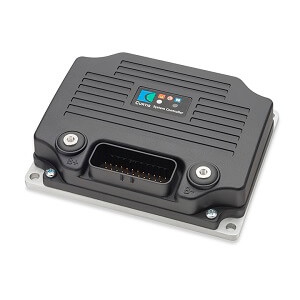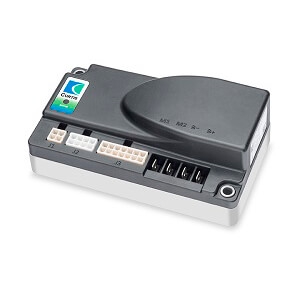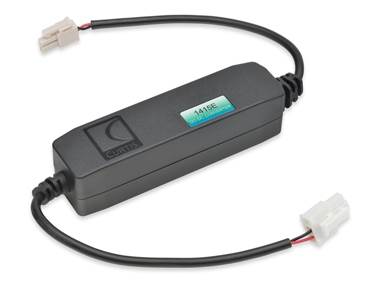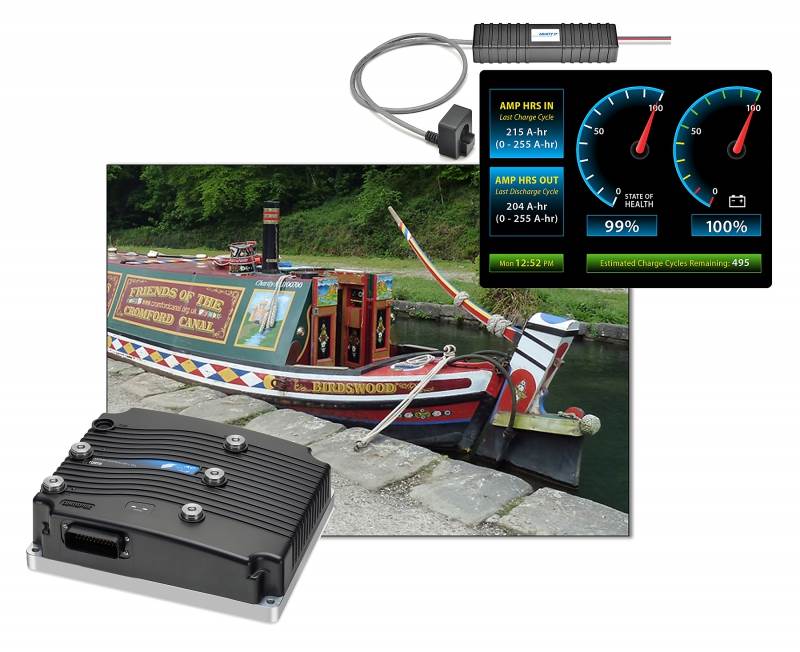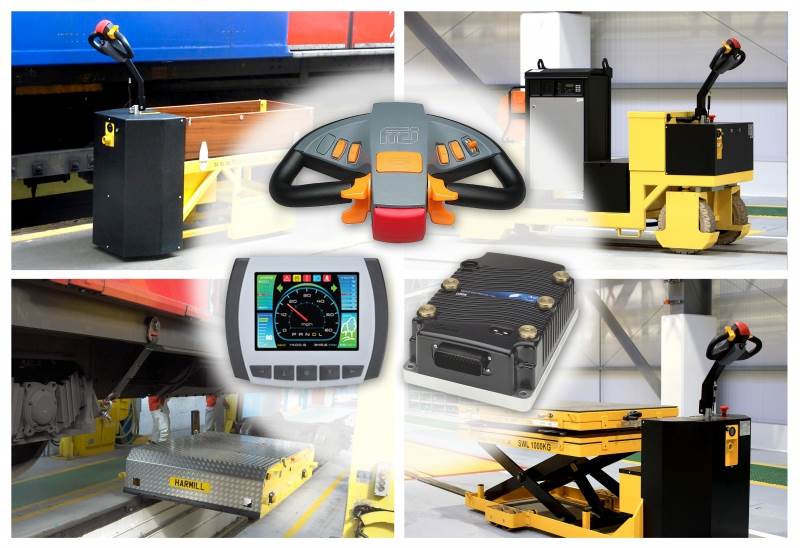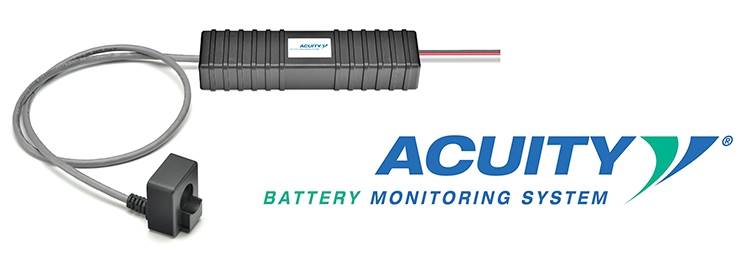- Contact 0870 350 7767
- |
- Advertise
Curtis AC Controllers drive Surface and Internal PMAC
 News and PR from Curtis Instruments (UK) Ltd - Published 14 March 2019
Curtis AC Motor Controllers drive surface and internal PMAC and Induction Motors, from just about any manufacturer you choose
News and PR from Curtis Instruments (UK) Ltd - Published 14 March 2019
Curtis AC Motor Controllers drive surface and internal PMAC and Induction Motors, from just about any manufacturer you chooseThese controllers are periodically updated to meet and exceed European Safety requirements and the E and SE Series models are now capable of running Synchronous and Asynchronous AC motors. Their advanced vector control technology ensures that efficiency is optimised under all load conditions and temperatures.
LetÂs look at the motor types, as this can be confusing.
Induction motors are Asynchronous. This means that the rotating core of the motor, the rotor, runs faster or slower than the rotating AC magnetic field. The rotating magnetic field induces current into the rotor and sets up the opposing magnetic field. The AC induction motor is extremely robust as its solid metal rotor has no electro-mechanical brush gear. Fewer components and ease of manufacturing means lower cost. That and the fact that theyÂre virtually indestructible, makes the induction motor a popular choice. ItÂs so reliable that Tesla chose it for the original model S and itÂs used on over 90% of industrial trucks. But of course thereÂs always a trade-off, and with induction thatÂs a lower efficiency (up to base speed) and an increased size and weight.
Permanent magnet AC motors are Synchronous in that the rotating core of the motor turns at the same as the rotating magnetic field. The rotor has magnets either on the surface of the rotor or embedded into the rotor. These are known as Surface PMAC or Internal PMAC and both have different characteristics. PMAC are highly efficient at base speed and are effective electric generators too. Being smaller and lighter than induction makes them good for a variety of applications like AGV design or robotics.
Motors are designed to achieve peak power at a certain speed; the base speed of the motor. At this point the motor is absorbing as much electrical power as possible. To run the motor faster than base speed, a motor field has to be weakened electronically. The base speed is determined as part of the unique auto-characterisation process pioneered by Curtis at the turn of the century.
For an induction motor itÂs simple to reduce a motor field and extend the motor speed, this is energy efficient and one reason Tesla used this motor technology. This is very useful for traction applications. With a PMAC motor more energy is used to suppress the field of the permanent magnets. A Surface PMAC motor is less likely to be field weakened as the magnetic path is not as stable as an Internal PMAC motor. An Internal PMAC motor may be field weakened but extreme care has to be taken in order not to de-magnetise the magnets. This precise field weakening is determined by the motor model held within the controller.
PMAC motors offer higher efficiency up to the base speed and also make very efficient generators as no energy is used to produce the rotor field.
Other announcements from Curtis Instruments (UK) Ltd
-
Curtis dual-voltage high frequency TEMPO battery charger
A suitcase-sized multi-function high efficiency three phase HF charger for charging a range of batteries from a single unit.
06 Mar 2020
-
New Powerful System Controller for a Wide Application Range
The Curtis Model 1351 System Controller provides 26 multi-function I/O for application in stand-alone or CAN connected systems.
14 Mar 2019
-
Brushed DC PM Controller for electric Power Steering and Steer-by-Wire Systems
The new Curtis Model 1220E brushed DC permanent magnet motor controller for electric power steering and steer-by-wire systems fully meets EN1175 1:1998+A1: 2010 standards
14 Mar 2019
-
New Curtis AC Control Systems for Powered Pallet Trucks
New Curtis AC Control Systems for Powered Pallet Trucks give top performance and safety at a very low price
10 Apr 2018
-
Stop warehouse staff riding to the danger zone
Curtis new Danger Zone lamp creates a safety zone on each side of your truck whilst in use to provide a visual warning for pedestrians in the vicinity.
05 Mar 2018
-
LED Safety
Curtis UK is a leading supplier of traction battery chargers and safety equipment for materials handling equipment.
05 Mar 2018
-
Truck Charger
Curtis UK are the UK's leading supplier of competitively priced 50HZ and High Frequency on-board and stand-alone battery chargers ...
05 Mar 2018
-
Curtis Launch HF9 High Frequency Battery Charger at IMHX
Curtis UK will launch their new fast charge, 93% energy efficient HF9 high frequency battery charger at IMHX in September.
27 Jul 2016
-
Curtis at IMHX with everything your vehicle needs
Curtis Instruments are globally renowned technology leaders in the design & manufacture of instrumentation, controls, integrated systems, charging & safety products for battery and IC powered vehicles
27 Jul 2016
-
Curtis UK and Doosan Forklifts; Simple, Powerful, Moving
The best partnerships in business are based on synergy of products and performance and a mutual ethos of customer care.
27 Jul 2016
-
The new Curtis 1415
The new Curtis 1415 is a low power, isolated DC/DC converter intended to provide power to smart devices and other low power components.
01 Mar 2016
-
VW Camper Van has ZERO Emissions - no, really!
Tour the British countryside in an all electric camper van, safely controlled by Curtis E-Series technology.
17 Feb 2016
-
NEW 1353 eXM CANbus Hydraulic I/O Expansion Module
The Curtis Model 1353 CANbus I/O expansion module provides additional I/O capabilities to any CANopen vehicle control system. It allows accurate contr
17 Feb 2016
-
Curtis Expands Global Product Development Team
David Miller is appointed as Special Engineering Projects Manager and will be a key contributor to design engineering and product development for Curt
17 Feb 2016
-
Precision Power Innovation
At last there is a solution for one of the greatest dilemmas of fleet managers...
16 Dec 2015
-
1938 Narrowboat, Birdswood, uses Curtis 1238 AC Vector Drive
by Kerry Green, European Technical Manager, Curtis (UK)
15 Oct 2015
-
CURTIS SPEED CONTROLLERS HELP KEEP HARMILL ON TRACK
Further information on Harmill Systems is available at www.harmill.co.uk. Information on the systems and services available from Curtis can be found at www.curtisinst.co.uk or by calling 01604 885201
15 Oct 2015
-
ACUITY Battery Monitoring System
The most accurate, reliable and complete set of vehicle battery information available on the market.
15 Oct 2015






